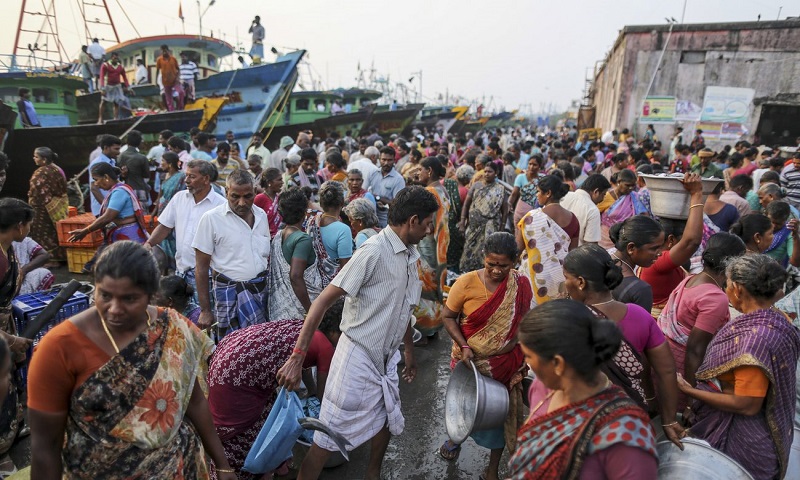Bay of Bengal: depleted fish stocks and huge dead zone signal tipping point

The Bay of Bengal’s basin contains some of the most populous regions of the earth. No less than a quarter of the world’s population is concentrated in the eight countries that border the bay1. Approximately 200 million people live along the Bay of Bengal’s coasts and of these a major proportion are partially or wholly dependent on its fisheries2. For the majority of those who depend on it, the Bay of Bengal can provide no more than a meagre living: 61% of India’s fisherfolk already live below the poverty line. Yet the numbers dependent on fisheries are only likely to grow in years to come, partly because of climate change. In southern India drought and water scarcity have already induced tens of thousands of farmers to join the fishing fleet3. Rising sea levels are also likely to drive many displaced people into the fishing industry. But the fisheries of the Bay of Bengal have been under pressure for decades and are now severely depleted4. Many once-abundant species have all but disappeared. Particularly badly affected are the species at the top of the food chain. The bay was once feared by sailors for its man-eating sharks; they are now rare in these waters. Other apex predators like grouper, croaker and rays have also been badly hit. Catches now consist mainly of species like sardines, which are at the bottom of the marine food web5. Good intentions have played no small part in creating the current situation. In the 1960s, western aid agencies encouraged the growth of trawling in India, so that fishermen could profit from the demand for prawns in foreign markets. This led to a “pink gold rush”, in which prawns were trawled with fine mesh nets that were dragged along the sea floor. But along with hauls of “pink gold” these nets also scooped up whole seafloor ecosystems as well as vulnerable species like turtles, dolphins, sea snakes, rays and sharks. These were once called bycatch, and were largely discarded. Today the collateral damage of the trawling industry is processed and sold to the fast-growing poultry and aquaculture industries of the region6. In effect, the processes that sustain the Bay of Bengal’s fisheries are being destroyed in order to produce dirt-cheap chicken feed and fish feed. The aid that flowed in after the massive tsunami of 2004 also had certain unintended consequences7. It led to the modernisation and expansion of the small-scale fisheries sector, which generated an illusory boom followed by a bust. In recent decades the governments of the nations that surround the Bay of Bengal have striven to expand and encourage their fisheries. But unfortunately these efforts have often ignored questions of long-term sustainability. Although attempts have been made to regulate fishing in the bay they have been largely ineffective. In the 1980s and 90s, fisheries expanded into new grounds and began to target new species and for a while there was an increase in catches5. But catch rates began to decline in the late 1990s and trawlers were forced to move farther and farther from their home waters. This in turn has created a little-noticed grid of conflict. In 2015 Sri Lankan authorities claimed to have spotted 40,544 Indian trawlers in Sri Lanka’s territorial waters8. Seventy trawlers were seized and 450 fishermen were arrested. At least 100 deaths have been reported9. Conversely, many Sri Lankan tuna fishermen have also been arrested in India. On the other side of the subcontinent, large numbers of Indian fishermen are frequently arrested in Pakistan: 220 of them were released in December 2016, as a goodwill gesture. In Myanmar, until a ban was enacted in 2014, the catch collected by foreign fishing boats was 100 times greater than that of local fishermen10. In the troubled Arakan region, where 43% of the population is dependent on fisheries, catches have declined so steeply that many families are mired in debt11. Conflicts over fisheries and other resources are a significant but largely unnoticed aspect of the explosive tensions of the region.

